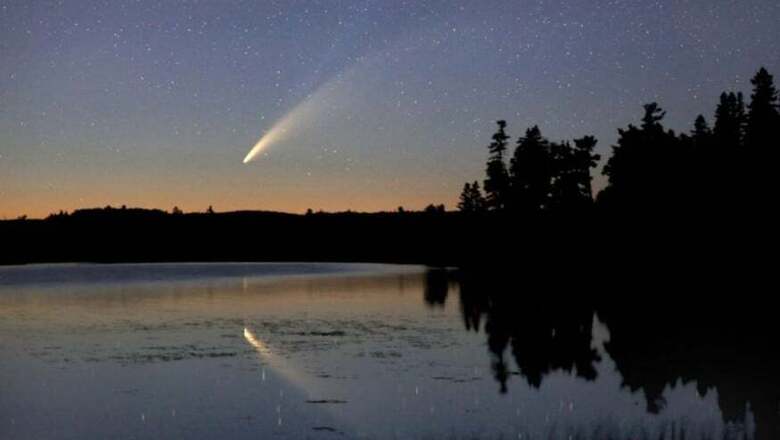
views
Spotting a comet streaking across the sky can be a fascinating sight. Starting from sunset today, July 14, the comet C/2020 F3 NEOWISE will become visible for all, and should be visible even with the naked eye. The rare comet is expected to remain visible from India for a period of 20 days, after which the fuzzy comet is expected to fade away, and would hence require binoculars or a small telescope to be spotted.
What makes the NEOWISE comet a particularly exotic sighting is its age – the comet is believed to contain intergalactic particles that it picked up from its travels across the universe for over 4 billion years, and its approach to Earth – the next time NEOWISE is expected to approach Earth is after another 6,800 years, as per data from USA’s space exploration agency, NASA.
The NEOWISE comet is named after NASA’s interstellar object sighting mission – Near Earth Object Wide-field Infrared Survey Explorer. It was discovered by NEOWISE’s infrared channel telescopes earlier this year, in March 2020, and classified with its nomenclature name of C/2020 F3. Three months later, NEOWISE picked up the comet’s near-Sun approach on July 3, which itself is a rare occurrence.
Continuing on its trajectory, NEOWISE is slated to approach Earth from today, July 14. From India, the comet will become visible in the northwestern sky right after sunset for 15-20 minutes, and skywatchers will be able to spot the blazing trail of the NEOWISE comet even with the naked eye. The sighting will remain possible for about 20 days, after which the comet’s trail will blaze away into distant space.
What makes the 2020 F3 NEOWISE comet particularly special is how it reacted to its close approach to the sun. Its proximity to the Sun scorched the outer layers of the comet, because of which the dust, gas and debris started erupting from its icy mass that NASA states is 3 miles (4.8km) wide. However, the comet has still retained most of its fiery mass, but the forces will likely create an impressive view of fireworks as NEOWISE streaks across the dusk sky.
By mid-August, C/2020 F3 NEOWISE is expected to blaze back away into the depths of our solar system, and eventually away into the mysterious depths of our galaxy. Given its rare orbit and its approach to Earth, be sure to use your smartphone compasses to gaze into the north-western sky just as the sun sets in India for a sight that will certainly not repeat itself in our lifetime.



















Comments
0 comment